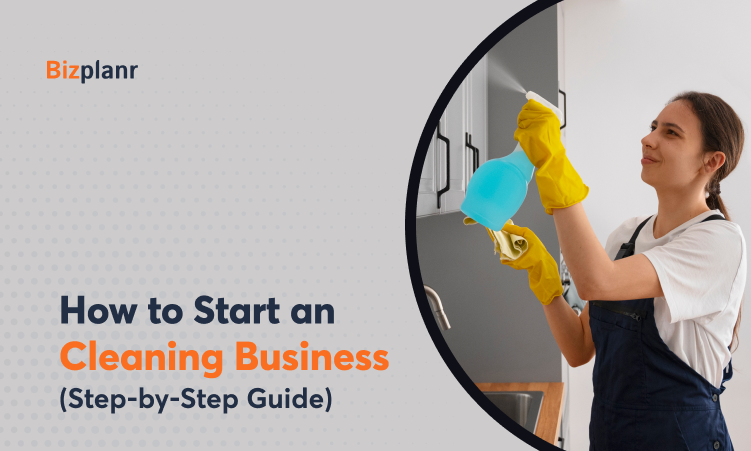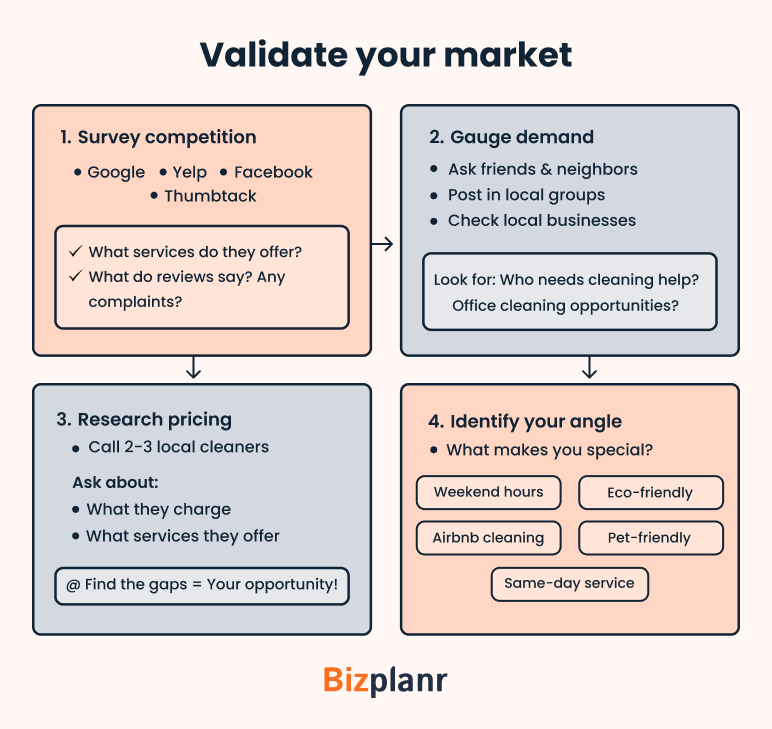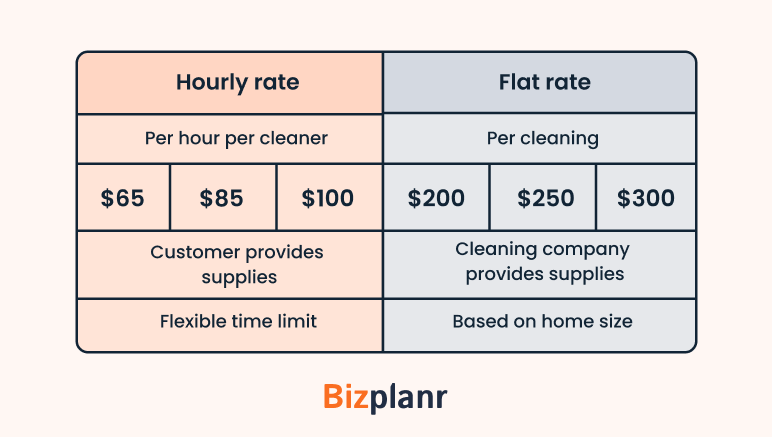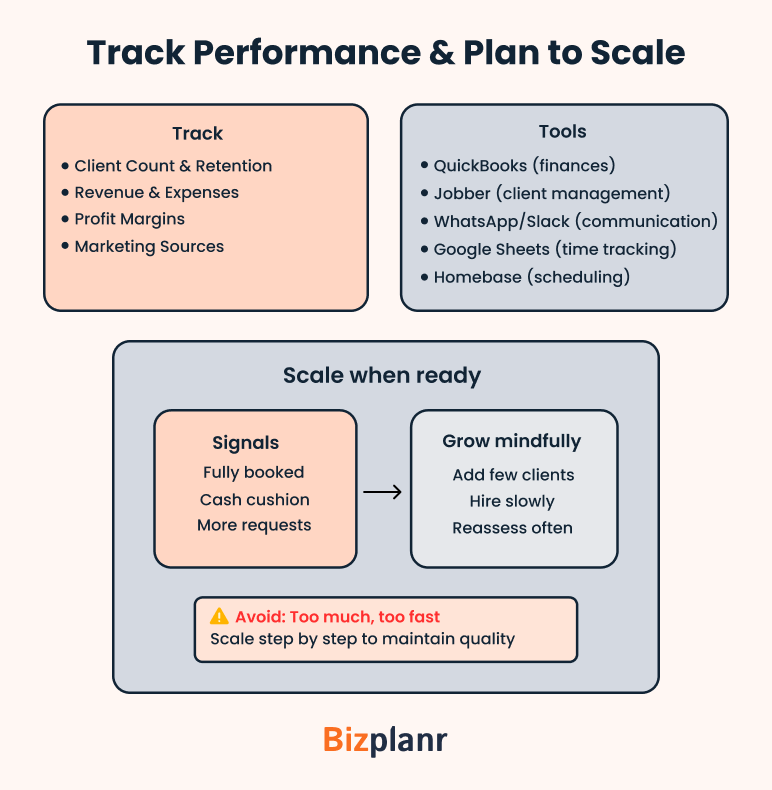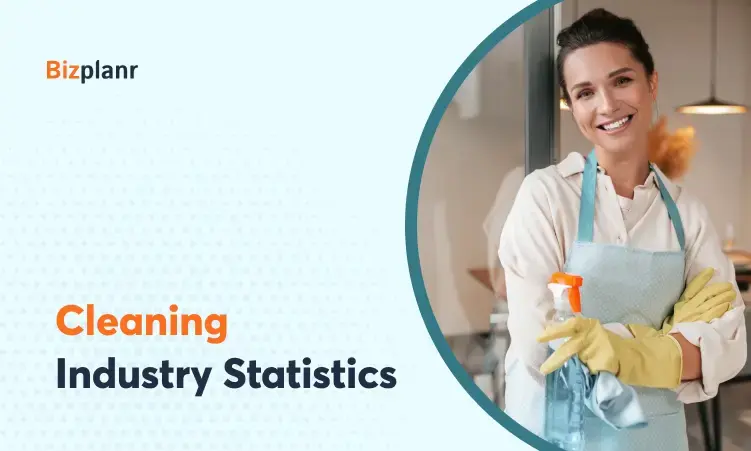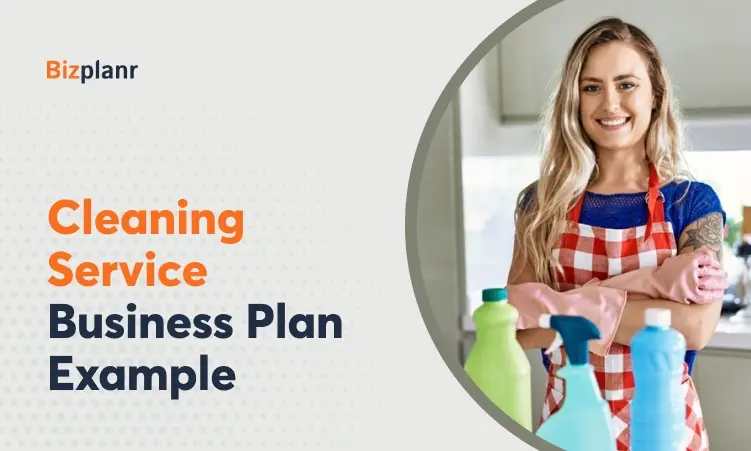If you're wondering how to start a cleaning business, the good news is—it’s easier than you might think. You don’t need a big budget or special qualifications. You can get started quickly with some basic supplies, a strong work ethic, and the right plan.
Many people begin part-time and grow their businesses as they gain more clients. Cleaning work is always in demand, and with the right approach, income can grow fast.
In this guide, we’ll cover every step to help you start and grow a successful cleaning business.
Key Takeaways
- Starting a cleaning business is affordable and flexible. You can begin with basic tools and part-time hours.
- Choosing the right niche helps you stand out and serve the right customers.
The cost of a cleaning business usually ranges from $2,000 to $10,000, depending on what type of cleaning you do. - Marketing, good service, and steady effort help your cleaning business grow.
- In this blog, we’ll explain how much it costs to start a cleaning business, the steps to follow, and what to think about before you begin.
Step 1: Choose your cleaning niche
The first step is to decide what type of cleaning services you’ll offer—your niche. Focusing on a niche helps you target the right customers and budget appropriately.
Here are three common options:
| Residential cleaning | |||
|---|---|---|---|
| Includes | Pros | Cons | Startup Costs |
| Homes and apartments | - Easy to start with basic supplies. - There's a big market of busy homeowners. - You can start alone. |
- Clients may expect lower prices. - Most jobs are during the day on weekdays. |
Low |
| Commercial cleaning | |||
| Includes | Pros | Cons | Startup Costs |
| Offices, stores, and business spaces | - Bigger jobs and steady contracts. - Businesses often pay well for good service. |
- You may need stronger equipment and at least a small team. - Most cleaning happens at night or on weekends. |
Moderate |
| Specialty cleaning services | |||
| Includes | Pros | Cons | Startup Costs |
| Carpet cleaning, window washing, pressure washing, post-construction cleaning, Airbnb turnovers | - You can charge more per job. - Less competition due to special skills. |
- You may need special equipment or training. | Varies |
Pick a niche that matches your skills, tools, and budget. Start small and grow as you gain experience.
Step 2: Validate your market
Before printing business cards or buying equipment, take time to research and validate your local market. This helps you choose the right type of cleaning and find ways to stand out.
To conduct a local market scan, start by surveying the competition. Search on Google, Yelp, Thumbtack, or Facebook to find local cleaning businesses. See what services they offer and read reviews. If people complain, think about how you can do better.
Next, gauge customer demand by asking friends, neighbors, or posting in local groups to see if anyone is looking for cleaning help. For office cleaning, check if local businesses hire cleaners.
Research pricing and services by calling 2–3 local cleaners. Ask what they charge, what they offer, and note what's missing in their service. That gap could be your niche.
Finally, identify your angle by thinking about what makes your service special—like weekend hours, eco-friendly products, or Airbnb cleaning. This quick research helps you start smart and stand out.
Step 3: Build a business plan
Next: Let’s work on creating a business plan for your cleaning business. Business owners, in general, associate business plans with bank loans and investor funding. But that’s definitely not the case.
Besides helping you get that bank loan or investment, a business plan helps you better understand your business model, target market, and competition. Ultimately, helping you prepare you for every prospect of your business.
How to write your business plan? What to include? How long should it be?
You might have a lot of questions, but. You don’t need to know everything just yet. Just create a simple version of your plan to get things moving and plan your next steps accordingly.
Here’s an easy way out: Draft a basic version using Bizplanr. It’s a free, AI-powered tool that asks you a few simple business questions and generates a business plan. Of course, you can’t submit it to the bank for a loan, but it’s perfect to validate your idea and business model.
Get Your Business Plan Ready In Minutes
Answer a few questions, and AI will generate a detailed business plan.
Step 4: Register your business and set up legal basics
Taking care of these basics early on will protect you and build trust with clients:
- Choose a business name: Pick a simple, catchy name that fits your service. If it’s not your own name, you may need to register it as a DBA ("Doing Business As").
- Select a business structure: If you’re working alone, you can be a sole proprietor (easy, but no personal protection) or an LLC (more secure, better protection). Many cleaners choose LLCs.
- Get a business license: Most cities or counties require a basic license to operate. It’s usually easy to get from your local office. Skipping this can lead to fines or being shut down.
- Obtain an EIN: This is your business’s Social Security. It’s free on the IRS website—needed for an LLC, hiring, or opening a business bank account.
- Business bank account: Use a separate account for all business income and expenses. It keeps your finances clean and organized.
- Insurance: At a minimum, get general liability insurance. It covers you if something is damaged or someone is hurt on the job.
Step 5: Set up your equipment and supplies
Once your business is set up, it’s time to get the tools you need to clean. What you buy depends on the type of cleaning you’ll do. Here’s a basic guide:
| Type | Tools/Equipment | Cost Range |
|---|---|---|
| Residential | Eco-friendly cleaners, wood polish, or stone countertop cleaner, step stool, air freshener, or essential oils. | $50 – $200 (basic kit) |
| Commercial | Industrial vacuum, floor buffer or polisher, wet/dry shop vacuum, extendable squeegees and window washing tools, caution signs, heavy-duty cleaners or degreasers, PPE (masks, eye protection, coveralls). | $300 – $1,000+ |
| Specialty |
|
$100 – $2,000+ (varies) |
Step 6: Decide on your pricing model
You have two main pricing approaches: Hourly rates or flat fees. Hourly pricing is straightforward and protects you from underestimating job time, but clients may worry about cost control. Flat rates give customers predictable costs and can be more profitable for experienced cleaners, but you risk losing money on jobs that take longer than expected.
Here’s an example pricing model.
But what are the factors affecting pricing?
- Location: Cities cost more than small towns.
- Cleaning type: Deep cleaning costs more than basic cleaning.
- Size and condition: Bigger or dirtier homes take more time.
- Frequency: Regular cleanings often get discounts.
Don’t worry. You can start calculating pricing with a basic formula: Hourly wage + overhead costs + 30% profit margin = your hourly rate
For example: $15/hour wage + $5 overhead + 30% margin = $26/hour rate.
Start conservatively and adjust based on demand and experience. As you scale or hire employees, revisit your pricing so it reflects increased costs and your growing expertise.
Step 7: Plan your fulfillment system (aka service delivery)
Fulfillment means how you do your cleaning jobs each day. A clear system helps you stay organized and look professional.
Scheduling can be as simple as using a paper planner or as efficient as adopting digital tools like Google Calendar or Jobber. While paper might work for solo cleaners, digital systems offer reminders, recurring job automation, and route planning—ideal as your team grows.
Client onboarding can always begin with a walk-through of the space. Use a checklist to note specific client preferences or no-go zones. Draft a simple agreement covering services, frequency, and policies—this keeps expectations crystal clear from the start.
Quality control is non-negotiable. Use standardized checklists for each job type, do spot checks regularly, and encourage feedback. Missed spots and sloppy work can kill repeat business—so train your team to self-audit before calling a job done.
Use tools like Clean Smarts or a shared Google Sheet for feedback tracking and before-and-after photos.
The goal? Be predictable. When clients know exactly what to expect and get consistent results, they stick around (and refer others). Professionalism isn’t just about uniforms—it’s about showing up, doing the job right, and making it feel effortless.
Step 8: Market your cleaning business
You may be great at cleaning, but people need to find you. Good marketing helps you get clients and grow. Many methods are free or low-cost, such as:
- Local SEO: Set up a free Google Business Profile so you show up in “cleaning near me” searches. Also, join Yelp, Facebook groups, or Thumbtack.
- Social media marketing: Make a simple website or Facebook page and add your services, phone number, and some photos. Post occasionally so that people notice you're there.
- Reviews/Feedback: Ask clients to leave a review so you can use them on your site or flyers.
- Flyers & cards: Hand out flyers and cards or leave them in places like coffee shops or laundromats.
- Networking: Tell neighbors, parents at school, or people at events about your cleaning service.
- Referral program: Provide a discount or incentive for referrals from clients.
The key with marketing is consistency and visibility. Keep marketing, even when you're busy—it helps your business grow.
Step 9: Hire helpers (if needed) and train for quality
In the beginning, you’ll likely handle all cleaning tasks yourself. But as demand increases, you’ll reach a point where extra hands are essential—especially if you’re turning down clients or looking to take on larger jobs.
When that time comes, start by seeking helpers through trusted referrals from friends, family, or clients. You can also post job listings on platforms like Indeed or Facebook, or explore local college and community boards.
Always conduct background checks. Since employees will be working in clients’ homes, trustworthiness and professionalism are non-negotiable.
Once hired, train thoroughly.
- Share your cleaning checklist
- Demonstrate your preferred methods
- Walk them through your quality standards
- Emphasize punctuality, respectful behavior, and safety protocols—such as handling chemicals properly and lifting correctly.
Initially, allow them to shadow you, then supervise their work while offering constructive feedback. As they gain experience, they start building autonomy by introducing clear procedures: How to lock up, report tasks, or share updates. Use basic apps to track jobs or upload photos.
Maintaining consistent quality is crucial as your team grows. Address any issues promptly, recognize great performance, and create systems that support scalable hiring—like managing payroll, insurance, and staff schedules. Eventually, you may shift from cleaner to full-time business owner.
Step 10: Track performance and plan to scale
A cleaning business isn’t just about spotless homes—it’s also about knowing how your business is doing behind the scenes. Tracking a few key metrics will help you grow wisely and sustainably.
Pay attention to how many clients you have, how many stay, and how much you typically earn per job. Keep a close eye on your monthly revenue and expenses, whether it's through a notebook, spreadsheet, or tools like QuickBooks. Understanding your profit margins per job helps you decide if it’s time to adjust your pricing.
Also, find out where your clients are coming from—Google, flyers, referrals—so you know what marketing is working. Apps like Jobber help manage client info and scheduling, while WhatsApp or Slack can streamline team communication. For time tracking, try Google Sheets or Homebase.
If you’re regularly booked, have a cash cushion, or get requests for more services, consider expanding. But grow mindfully—too much, too fast, can hurt your business. Take it step by step: add a few clients, hire slowly, and reassess before scaling further.
6 Common cleaning business pitfalls (and fixes)
Every new cleaning business hits some bumps. Here are common mistakes—and how to fix them:
| Mistake | Fix |
|---|---|
| Charging too little | Know your costs and set a minimum job rate. Don't clean a whole house for $50. It's fine to start low, but don't go too low. |
| Skipping insurance or a license | Get a quote for liability insurance from day one and register your business. It protects you and builds trust. |
| Hiring too quickly | Document your hiring and training process first. Check references, train well, and give trial shifts. |
| Dropping quality | Use a checklist. Always double-check your work or follow up with clients. |
| Stopping marketing when busy | Keep a baseline of marketing always running, even when busy—ask for reviews or post updates online. |
| Mixing business and personal finances | Open a separate bank account for your business and track all income and expenses clearly. |
Final thoughts
Starting a cleaning business is a smart and doable goal. You don’t need a big investment—just hard work, reliability, and a solid plan. Pick the right niche, know your market, and set things up properly.
Your top priority? Deliver great service. That alone can lead to loyal clients, strong reviews, and steady growth.
And remember—every big cleaning company started small. With the right mindset and tools like Bizplanr.ai, you can turn one job into a full-time business.
Now’s the time to begin. Your first client could be just around the corner.
Get Your Business Plan Ready In Minutes
Answer a few questions, and AI will generate a detailed business plan.
Frequently Asked Questions
How much does it cost to start a cleaning business?
Starting a cleaning business typically costs between $2,000 and $10,000, depending on the size and services offered. A solo residential setup can begin with just a few hundred dollars for basic supplies, but adding insurance, registration, and equipment usually raises the cost.
Do I need a license or insurance to start?
Yes, you’ll need a business license to operate legally, and while insurance isn’t always required, it’s highly recommended. Liability insurance protects you from accidents, and clients often prefer insured cleaners. If you hire staff, workers' compensation insurance is usually mandatory.
How much can I charge per cleaning job?
Cleaning rates vary by location, job size, and service type. Here’s a quick guide:
- Hourly rates: $25–$50 per hour
- Per home/flat fee: $100–$200 per visit
- Deep cleans: 1.5–2× regular rate
- Commercial: $0.05–$0.20 per sq ft
- Specialty jobs: Carpet ($40/room), appliance ($25 each)
Check local rates and make sure your price covers time, travel, and supplies.
Can I run this business part-time?
Yes, absolutely. Many people start a cleaning business part-time as a side hustle. It’s flexible, easy to manage around your main job, and can grow into full-time work when you’re ready.
What tools do I need to manage a small cleaning business?
Tools to manage your small cleaning business include:
- Google Calendar – to schedule jobs
- Wave or QuickBooks – to track money and send invoices
- Google Sheets – to list jobs and payments
- Venmo, PayPal, or Square - for payment
- Phone & email – to talk to clients
- MileIQ – to track mileage for taxes
- Client forms & agreements – to keep things clear and organized
Start small, and add more tools as your business grows.
